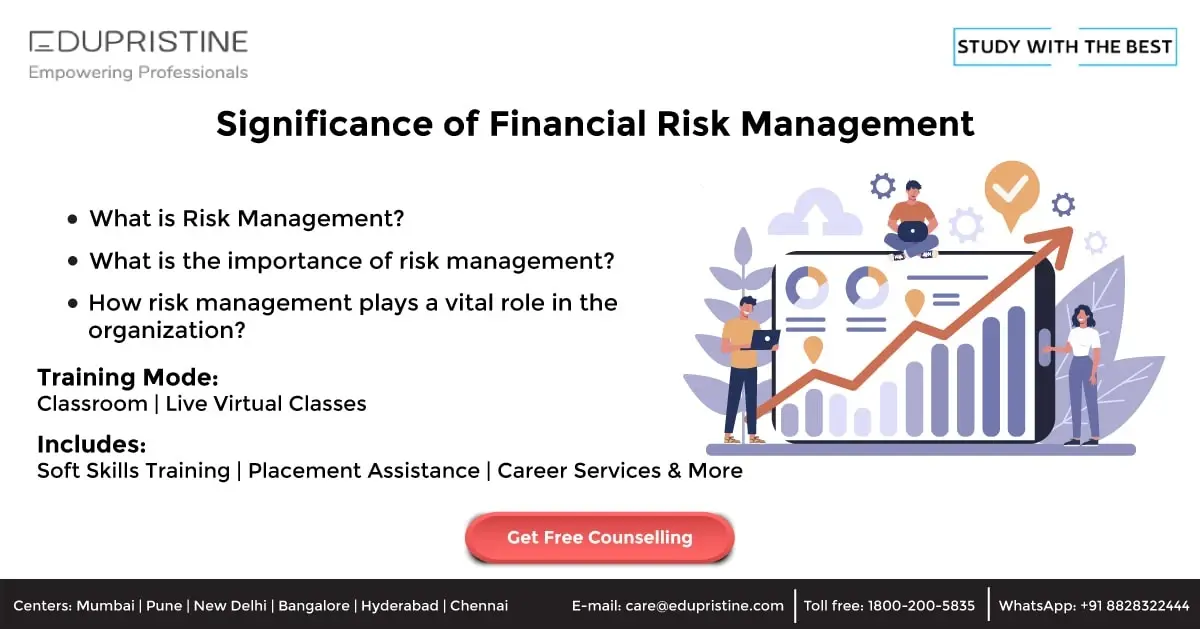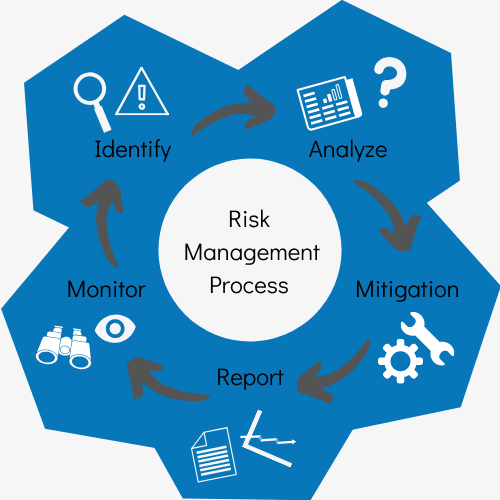The Essential Importance of Risk Management in Getting Organizational Objectives
In the quickly progressing company landscape, the capability to browse uncertainty has come to be a critical. This is where Risk Management action in, offering a structured strategy to recognizing, assessing, and mitigating prospective obstacles to proceed. It's more than just a protective procedure - it's a calculated device, cultivating strength and advancement. As we check out the essential role of Risk Management in accomplishing organizational goals, one can't assist however wonder: just how does this translate into real-world success?
Understanding the Concept of Risk Management in Organization
:max_bytes(150000):strip_icc()/risk-management-4189908-FINAL-2-976ae194e01848618ca94941ab9d2395.jpg)
The Indispensable Function of Risk Management in Strategic Planning
Integrating Risk Management right into critical planning acts as a protect for organizations, anchoring their lasting strategies with a strong structure of readiness and strength. Risk Management uses a structure for expecting uncertainties and developing ideal feedbacks, making certain the organization's survival and success even in the face of misfortune. By integrating Risk Management right into strategic planning, companies can change these unpredictabilities right into chances for development and innovation.

Techniques for Identifying, Assessing, and Prioritizing Threats
Navigating the facility landscape of risks needs the application of specific strategies for their prioritization, analysis, and identification. The procedure begins with Risk identification, employing devices such as SWOT evaluation, which assists in identifying possible dangers and possibilities. Next off, Risk analysis is performed to ascertain the possible influence and probability of each Risk. Tools such as Risk matrices and impact-probability charts are utilized for this. Risks are prioritized based on their potential influence and possibility, enabling organizations to concentrate their sources on high-priority threats. This systematic strategy makes certain a detailed understanding of the Risk landscape, making it possible for organizations to make enlightened decisions and effectively take care of risks to attain their objectives - importance of risk management.
Guarding Organizational Workflow Through Effective Risk Management
In business landscape filled with uncertainties, efficient Risk Management plays a pivotal role in protecting organizational procedures. It functions as a safety shield, mitigating the damaging impacts of potential dangers and ensuring the smooth performance of all processes. By recognizing and evaluating potential hazards, Risk Management enables organizations to develop durable backup plans. This preventive strategy aids in preserving operational security, even when challenged with unforeseen scenarios. Basically, Risk Management is the lifeline that keeps the business procedures afloat among stormy waters. It guarantees not only the survival but the sustainable growth of a company, making it an important device in attaining business purposes. Therefore, companies should invest in detailed Risk Management strategies check my reference to guard their procedures.

Transforming Prospective Threats to Opportunities: The Power of Risk Management
While prospective risks might initially appear as barricades to organizational success, reliable Risk Management can transform them right into opportunities. A positive approach to run the risk of Management includes identifying, assessing, and prioritizing threats to create approaches that turn them right into possible more helpful hints advantages. This procedure demands the growth of a risk-aware culture within the company, encouraging people to see dangers as possible drivers for change and growth, as opposed to mere dangers. importance of risk management. Via this lens, potential risks become opportunities to innovate, enhance procedures, and enhance resilience. Thus, by leveraging the power of Risk Management, companies can not only guard their operations however additionally stimulate growth and achieve their objectives in an unpredictable business setting.
Instance Studies: Success Stories of Risk Management Driving Business Objectives
Effective implementation of Risk Management approaches has generated impressive lead to various companies, highlighting the advantages of this method. Multinational companies like Microsoft and Google, for instance, have leveraged Risk Management to minimize risks and manipulate possibilities, driving their business goals onward. Microsoft's positive Risk Management approach aided it pivot swiftly throughout the 2020 pandemic, transitioning to remote work smoothly, thus keeping performance. Google, by analyzing and alleviating potential dangers in its cloud-based solutions, has actually guaranteed continuous solution, consequently strengthening consumer depend on. These instances show how effective Risk Management can not only steer services free from prospective challenges yet likewise direct them towards their tactical objectives. Hence, Risk Management is informative post integral to the quest of business objectives.
Conclusion
In final thought, Risk Management is basically important in accomplishing business objectives. By integrating Risk Management right into strategic preparation, organizations can much better browse uncertainties, safeguard operations, and capitalise on chances, therefore lining up with long-lasting goals.
At its core, Risk Management is the procedure of recognizing, assessing, and attending to potential risks that can negatively impact an organization's procedures or objectives. Next off, Risk evaluation is conducted to identify the prospective impact and probability of each Risk. Threats are prioritized based on their prospective influence and possibility, enabling organizations to focus their resources on high-priority risks. By identifying and analyzing possible hazards, Risk Management enables companies to develop durable backup plans. An aggressive method to risk Management includes identifying, evaluating, and focusing on dangers to design methods that transform them into possible advantages.